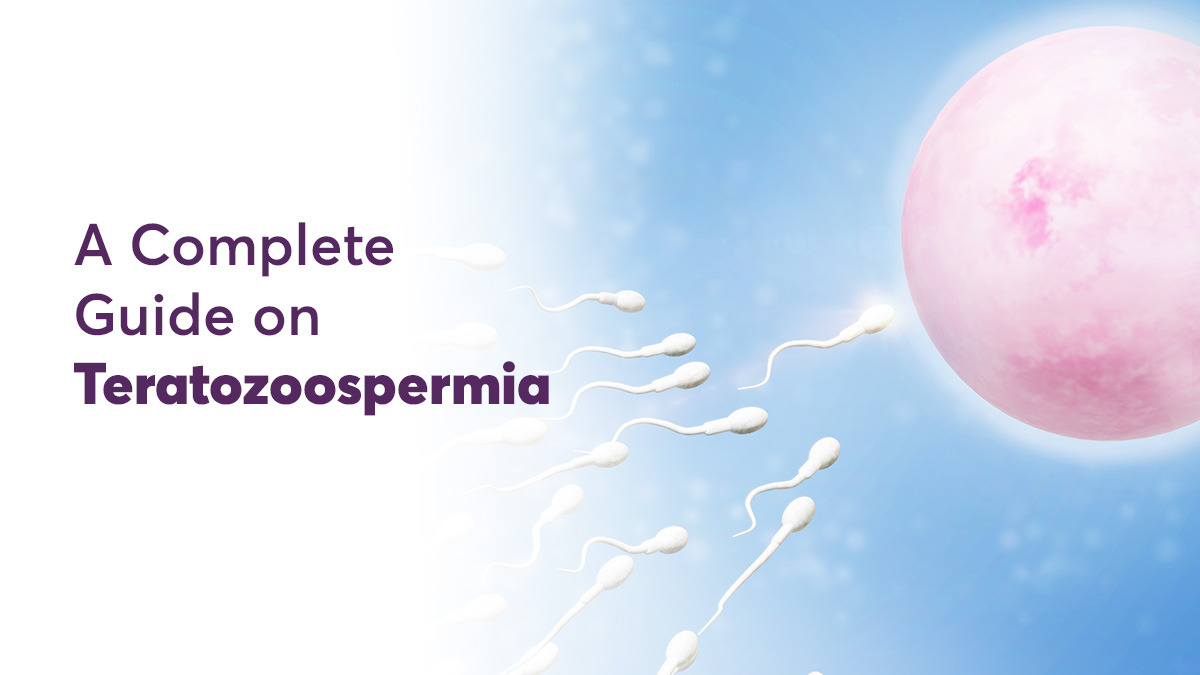Fertility challenges can affect couples hoping to conceive, and while female reproductive health often gets more attention, male reproductive issues are equally important. One such issue is teratozoospermia, a condition that significantly impacts sperm morphology, which refers to the size and shape of sperm.
What is Teratozoospermia?
Teratozoospermia is characterized by abnormalities in the shape or size of at least 85% of sperm in a man’s ejaculate. This condition can adversely affect sperm quality and, consequently, the chances of natural conception.
Who is at Risk?
Men of any age can experience teratozoospermia, but certain factors increase the risk. These include:
Family History: A hereditary component can play a role in the likelihood of developing this condition.
Medical History: Men who have undergone chemotherapy or pelvic surgeries are at a higher risk. Additionally, chronic conditions like diabetes can contribute to male infertility.
Types of Teratozoospermia
Teratozoospermia is categorized based on the severity of sperm abnormalities:
Mild Teratozoospermia: In this case, 86% to 90% of sperm exhibit abnormalities. Men diagnosed with mild teratozoospermia have a better chance of achieving natural conception.
Moderate Teratozoospermia: When only 5% to 9% of sperm are considered normal, fertility specialists may recommend assisted reproductive techniques, such as Intracytoplasmic Sperm Injection (ICSI).
Severe Teratozoospermia: Here, 96% or more of sperm are affected. Natural conception is highly unlikely, and advanced treatments like Intracytoplasmic Morphologically-selected Sperm Injection (IMSI) may be necessary.
Astheno Teratozoospermia: This condition combines morphological abnormalities with poor sperm motility. Although there is no cure, lifestyle changes, and assisted reproductive procedures can improve the chances of conception.
Oligo Teratozoospermia: Characterized by low sperm count and motility, this extreme form also requires assisted reproductive techniques for conception.
Causes of Teratozoospermia
Teratozoospermia usually presents no noticeable symptoms, making it difficult to diagnose without fertility testing. Common causes include:
Hormonal Imbalances: Low testosterone levels can disrupt sperm development and can often be treated with hormonal therapies.
Varicocele: Enlarged veins in the scrotum can elevate testicular temperature, affecting sperm production and morphology. Surgical intervention may be necessary.
Cryptorchidism: Undescended testicles can lead to fertility issues and contribute to teratozoospermia.
Infections: Sexually transmitted infections or other reproductive tract infections can adversely affect sperm health.
Lifestyle Choices: Factors like smoking, excessive alcohol consumption, and exposure to toxins can increase the risk of sperm abnormalities.
Diagnosis and Treatment
Diagnosing teratozoospermia involves a semen analysis, where sperm morphology is assessed. It is crucial to consult a fertility specialist for accurate diagnosis and to explore potential underlying causes. Treatment options may include hormonal therapies or surgical interventions, depending on the identified causes.
For couples facing fertility challenges, teratozoospermia is not insurmountable. Assisted reproductive technologies, such as IVF and ICSI, offer hope and pathways to parenthood. If you’re struggling with conception, consider reaching out to fertility specialists for support and guidance.
